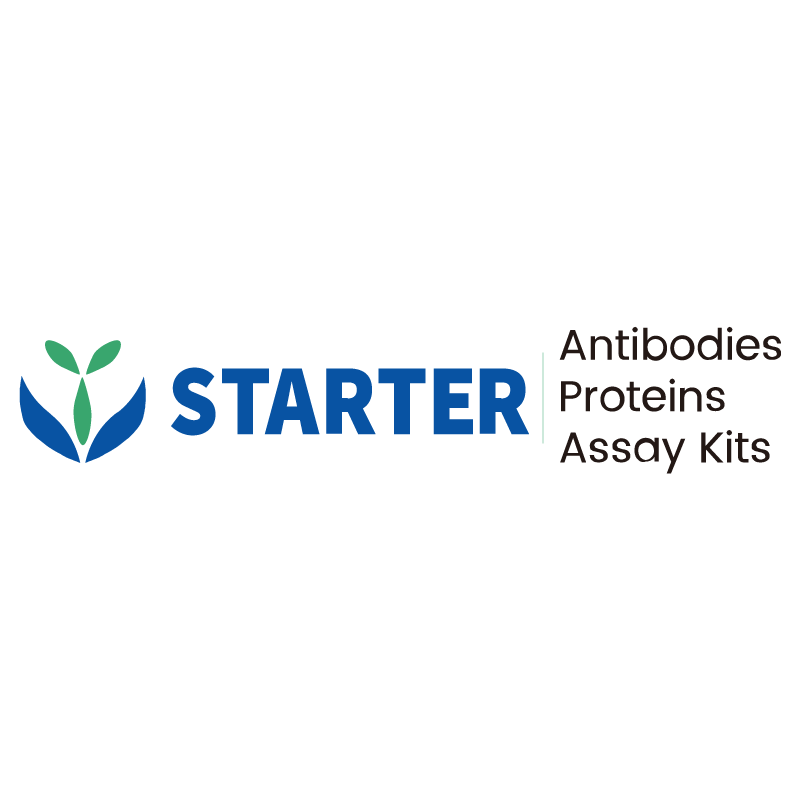WB result of SOX11 Recombinant Mouse mAb
Primary antibody: SOX11 Recombinant Mouse mAb at 1/1000 dilution
Lane 1: SH-SY5Y whole cell lysate 20 µg
Lane 2: IMR-32 whole cell lysate 20 µg
Secondary antibody: Goat Anti-mouse IgG, (H+L), HRP conjugated at 1/10000 dilution
Predicted MW: 47 kDa
Observed MW: 62 kDa
This blot was developed with high sensitivity substrate
Product Details
Product Details
Product Specification
| Host | Mouse |
| Antigen | SOX11 |
| Synonyms | Transcription factor SOX-11 |
| Immunogen | Synthetic Peptide |
| Location | Nucleus |
| Accession | P35716 |
| Clone Number | SDT-919-58 |
| Antibody Type | Mouse mAb |
| Isotype | IgG1,k |
| Application | WB, IHC-P |
| Reactivity | Hu |
| Positive Sample | SH-SY5Y, IMR-32 |
| Predicted Reactivity | Ms, Rt |
| Purification | Protein G |
| Concentration | 2 mg/ml |
| Conjugation | Unconjugated |
| Physical Appearance | Liquid |
| Storage Buffer | PBS, 40% Glycerol, 0.05% BSA, 0.03% Proclin 300 |
| Stability & Storage | 12 months from date of receipt / reconstitution, -20 °C as supplied |
Dilution
| application | dilution | species |
| WB | 1:1000 | Hu |
| IHC-P | 1:1000 | Hu |
Background
SOX11 is a 46.7 kDa nuclear transcription factor of the SOX-C family, encoded by the intronless SOX11 gene at 2p25.3, that contains an N-terminal high-mobility-group DNA-binding domain and a C-terminal transactivation domain; during embryogenesis it is transiently expressed in neuronal progenitors and mesenchymal cells, where it drives proliferation, survival, migration and dendritic morphogenesis of neural precursors via direct targets such as Tuj1 and Tead2, while haploinsufficiency causes Coffin–Siris syndrome with intellectual disability and microcephaly, and in adults its aberrant re-expression is a highly specific marker and oncogenic driver in >90 % of mantle cell lymphomas—both cyclin D1-positive and negative—by promoting B-cell receptor signaling, blocking plasma-cell differentiation and enhancing chemo-sensitivity through interaction with SAMHD1, and it additionally exerts context-dependent tumor-promoting roles in head-and-neck, breast and lung cancers .
Picture
Picture
Western Blot
Immunohistochemistry
IHC shows positive staining in paraffin-embedded human mantle cell lymphoma. Anti-SOX11 antibody was used at 1/1000 dilution, followed by a HRP Polymer for Mouse & Rabbit IgG (ready to use). Counterstained with hematoxylin. Heat mediated antigen retrieval with Tris/EDTA buffer pH9.0 was performed before commencing with IHC staining protocol.
Negative control: IHC shows negative staining in paraffin-embedded human tonsil. Anti-SOX11 antibody was used at 1/1000 dilution, followed by a HRP Polymer for Mouse & Rabbit IgG (ready to use). Counterstained with hematoxylin. Heat mediated antigen retrieval with Tris/EDTA buffer pH9.0 was performed before commencing with IHC staining protocol.
Negative control: IHC shows negative staining in paraffin-embedded human kidney. Anti-SOX11 antibody was used at 1/1000 dilution, followed by a HRP Polymer for Mouse & Rabbit IgG (ready to use). Counterstained with hematoxylin. Heat mediated antigen retrieval with Tris/EDTA buffer pH9.0 was performed before commencing with IHC staining protocol.
Negative control: IHC shows negative staining in paraffin-embedded human cervical squamous cell carcinoma. Anti-SOX11 antibody was used at 1/1000 dilution, followed by a HRP Polymer for Mouse & Rabbit IgG (ready to use). Counterstained with hematoxylin. Heat mediated antigen retrieval with Tris/EDTA buffer pH9.0 was performed before commencing with IHC staining protocol.


